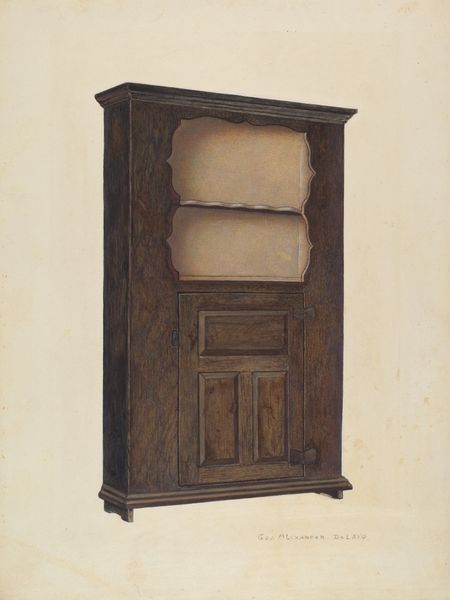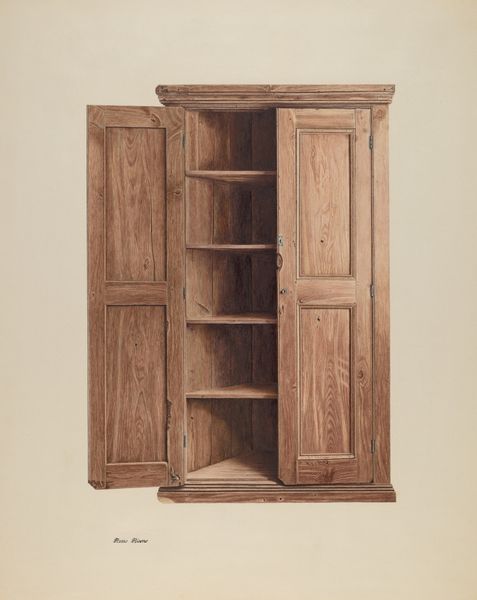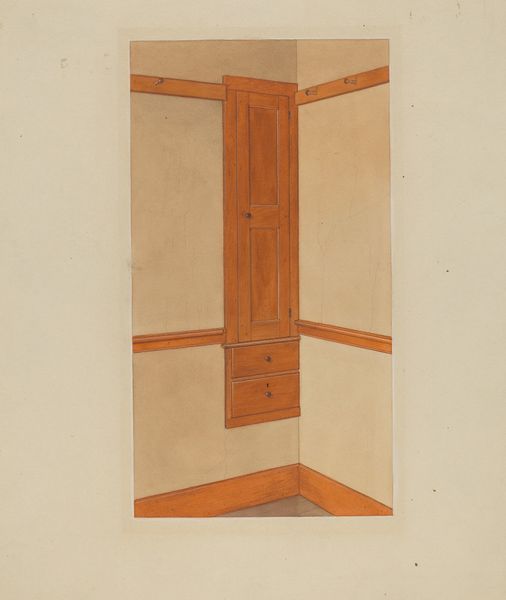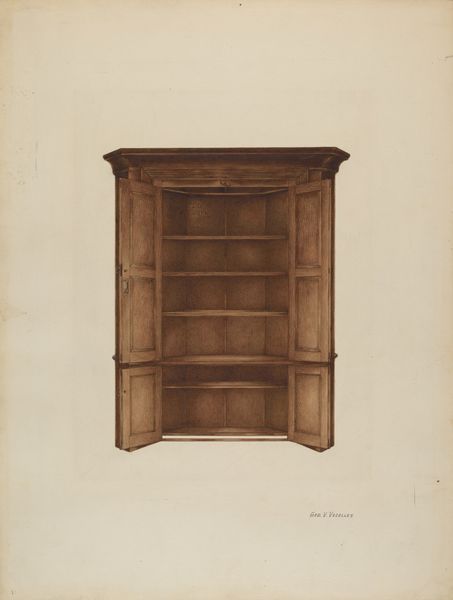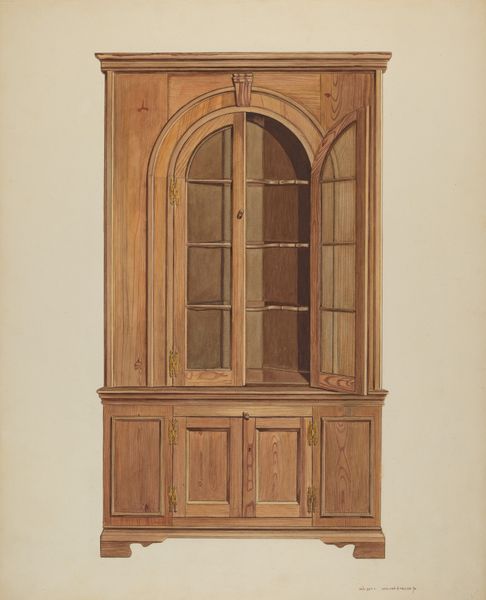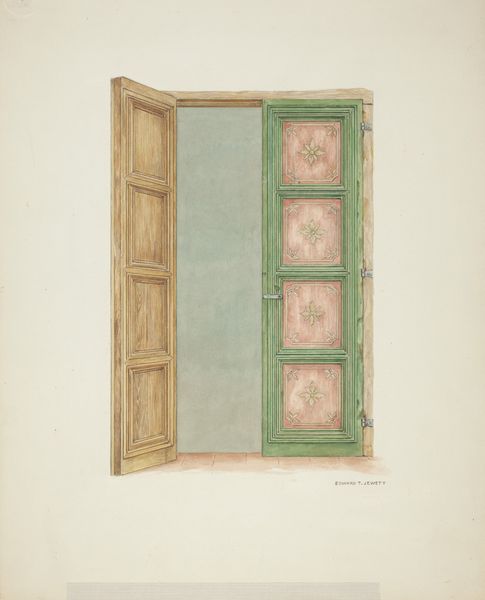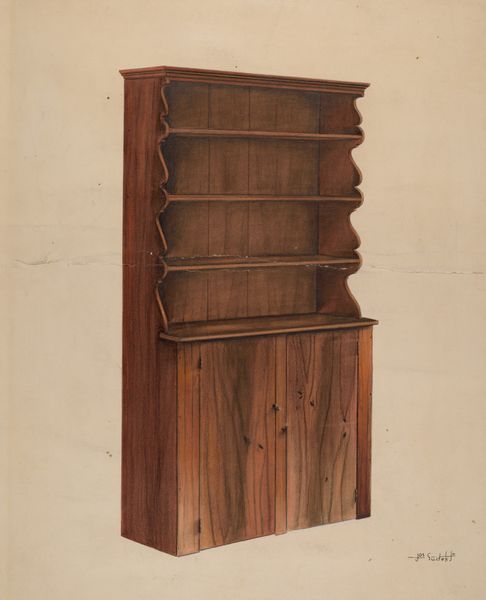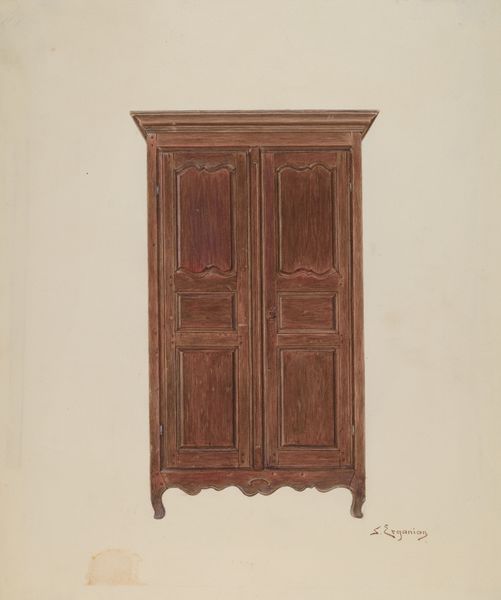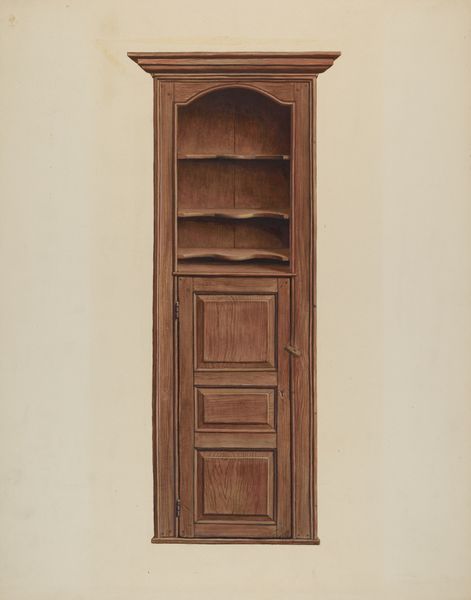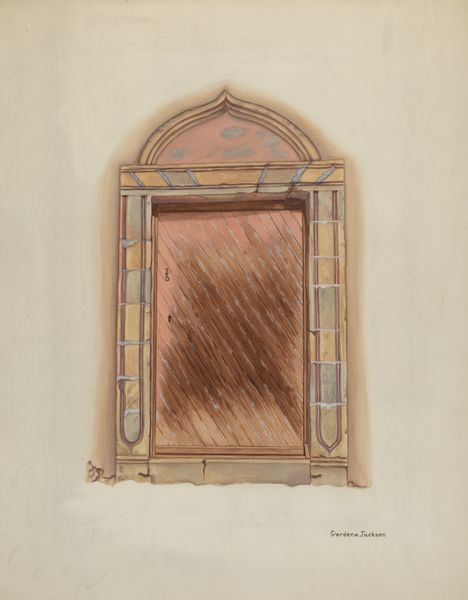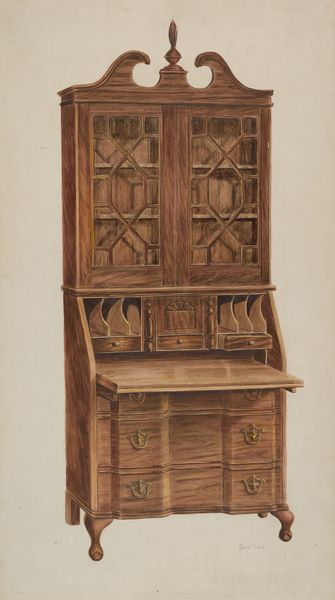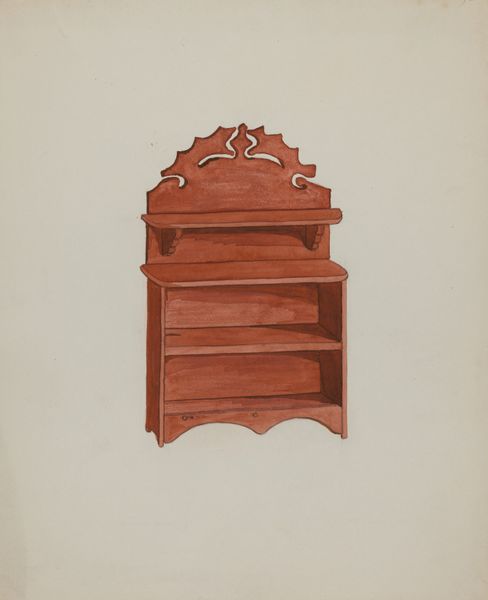
drawing, watercolor
#
drawing
#
charcoal drawing
#
oil painting
#
watercolor
#
realism
Dimensions: overall: 51.5 x 41.3 cm (20 1/4 x 16 1/4 in.) Original IAD Object: 7'high; 5'7"wide. See data sheet for details
Copyright: National Gallery of Art: CC0 1.0
Curator: Before us hangs Leslie Macklem's "Corner Cupboard," executed circa 1939, rendered in what seems a confluence of watercolor and drawing. Editor: It strikes me immediately as quite domestic, in both subject and execution. A familiar piece of furniture depicted with, dare I say, loving care. Curator: Precisely. Notice how Macklem articulates the verticality and planar structure through parallel strokes of what appears to be charcoal and carefully controlled watercolor washes to model the surface's variations. It gives us a solid, geometrically assured form, despite the somewhat rough appearance. Editor: Yes, and those darker hinges, they speak to a craft tradition, and even a certain folksiness. Corner cupboards themselves occupy liminal spaces – corners – filled with objects that hold personal significance. Are we meant to consider the psychological implications of this piece through the objects it would likely hold? Curator: An intriguing suggestion. Consider too the repeated curved profiles found within. From a purely structural perspective, each shelf establishes a recessional plane – an arrangement mirroring the opening arch at the piece’s crown. This visual echo introduces complexity within an ostensibly simple, utilitarian design. Editor: I agree, it isn't merely functional. Macklem is subtly reminding us that even mundane objects have symbolic resonance. Think about the colors selected; the varying red and brown tones evokes not just the material of the cupboard but also the passage of time, the warmth and the associations connected to this very object. Curator: The artist successfully navigates between mimetic representation and subjective interpretation. While anchored to observable reality, Macklem is very subtly manipulating space with his subtle modulations of tone. He provides just enough information for the viewer to infer depth, volume, and texture without explicitly illustrating every minute detail. Editor: A tender portrayal imbued with layers of cultural history. This humble cabinet then acts as a reminder of our connections to both past and future. It becomes not just furniture, but a repository of family memory. Curator: A meticulous orchestration of simple elements, producing surprisingly effective dimensionality. The very definition of ‘ordinary made extraordinary.’
Comments
No comments
Be the first to comment and join the conversation on the ultimate creative platform.
